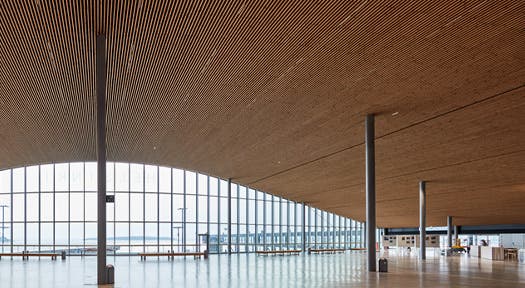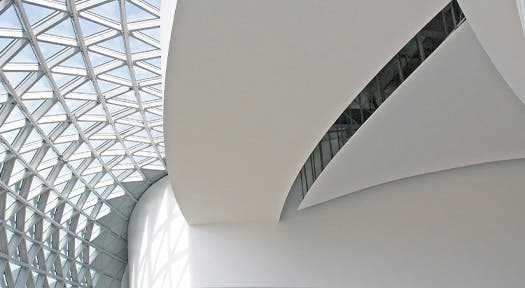Q: What is the difference between grille and baffle ceilings?
A: Grille ceilings consist of linear wooden slats arranged in grid-like patterns, offering a clean and structured aesthetic with optimized air circulation. Baffle ceilings, on the other hand, feature vertically suspended wooden slats, creating a dynamic, open design with excellent acoustic performance and modern visual appeal.
Q: How do wooden ceilings perform acoustically?
A: Wooden ceilings are designed to enhance acoustic performance through various core materials and perforation patterns. They help reduce noise levels and improve sound clarity, making them an ideal choice for environments like offices, auditoriums, and commercial spaces. USG ME offers acoustical wood ceilings with performance ratings of up to 0.95 NRC, ensuring superior sound absorption and a quieter, more comfortable environment. Acoustic fabrics and absorptive backings can also be integrated for enhanced sound control.
Q: Are different decors and finishes available for wooden ceilings?
A: Yes, wooden ceilings come in a wide range of decors and finishes, including natural wood veneers, painted surfaces, and laminates. These options allow for customization to match interior styles, from rustic to modern aesthetics, ensuring seamless integration into any design.
Q: What core materials are used in wooden ceilings?
A: Wooden ceilings are crafted using a variety of core materials to meet diverse design and performance needs. Common materials include MDF (Medium-Density Fiberboard), HDF Board (High-Density Fiberboard), Honeycomb structures, and PETfelt for lightweight and sustainable options. These cores are chosen for their stability, acoustic properties, and compatibility with various finishes. Additionally, edge banding options like wood veneer or ABS enhance durability and aesthetic appeal, ensuring high-quality and long-lasting solutions.
Q: What are the available perforation patterns for wooden ceilings?
A: Wooden ceilings offer a wide range of perforation patterns, including linear slots, circular perforations, and custom designs. These patterns are both decorative and functional, enhancing acoustic absorption and overall performance. The available perforation patterns, such as MR 050 250V, MR 100 300, and MS 075 500H, feature open area ranges from 2.2% to 14.1%, ensuring flexibility to meet both aesthetic and acoustic requirements for any space.
Q: What warranty is offered for wooden ceilings?
A: Warranty terms for wooden ceilings vary by manufacturer and product range. Typically, warranties cover manufacturing defects and ensure long-lasting quality, with durations ranging from 5 to 15 years depending on the product specifications and installation conditions.
Q: Can wooden ceilings match other interior decor elements?
A: Absolutely! Wooden ceilings can be customized to match other interior decor elements such as walls, floors, and furniture. Coordinated finishes and color-matching options ensure a harmonious and cohesive design throughout your space.

























